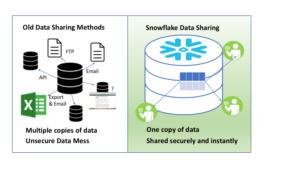THE SNOWFLAKE SUMMIT RECAP – 2019
The first snowflake summit finally happened from June 3rd to 6th and lived up to the expectation of many people who were interested in the summit. The four days summit had more than two thousand attendees, one hundred and twenty presentations across seven tracks, seven keynote presentations, more than thirty hands-on labs, more than thirty-five theatre sessions, and more than thirty countries represented by the attendees.
A quick recap of the summit…
Day 1
The first day of the summit majorly involved attendees of the summit undertaking an essential snowflake training which ended with the trainees taking an exam. This was a smooth and exciting experience as people were placed in rooms where they had their background scripts and environments with snowflake representatives ready to help anyone out. The exam was made of two parts, the first part was made of multiple choices relating to the training done, and the second part was done upon passing the first part, which was practical. The practical involved creating a user, a database, and a table that loaded from a Google spreadsheet, and executing various transformations that would load in the final table.
Day 2
The significant aspects of the day involved making important announcements about new snowflake features. The features included snowflake being available on Google cloud, external tables, snowflake organizations, data replication, data exchange, and data pipeline. The significant announcements are explained below:
- Snowflake announced that it would be available on the Google platform for 2020. This would ensure that organizations using snowflake get seamless and secure data integration across various platforms, thus enabling them to choose the right vendor for their business. It will also be easy for customers to utilize Google's ecosystem of applications. Customers also can use the Google cloud platform and manage applications across multiple clouds.
- Snowflake also introduced new data pipeline features that allow customers to query data directly from their data lake on Azure Blob Storage or AWS S3 which enables them to maintain the data lake as the single source of truth.
- Snowflake's data exchange is currently available for viewing privately with public viewing being set for later in the year. The data exchange is free to join marketplace for enabling users to connect with data providers for seamlessly discovering assessing and generating insights from the user's data.
Day 3
The keynotes on the third day started with Alison Levine, who is the author of "on edge," giving an informative talk on leadership. The founders of snowflake Benoît Dageville, who is the current president of products, and Thierry Cruanes, who is the current CTO, also gave a talk on the reason for starting snowflake. They did this by referencing their vision of; "Simply load and query data". The day ended with Kevin O'Brien of Kiva.org and Julie Dodd of Parkinson's UK showing how data could be used to make the world a better place.
Day 4
The last day of the summit saw Matthew Glickman, the Snowflake VP of Customer and Product Strategy, giving a closing keynote on some of its customer's journey to be data-driven. Some of the customer representatives invited on stage included Brian Dumman, Chief Data and Analytics Officer, McKesson, Yaniv Bar-Dayan, Cofounder and CEO, Vulcan Cyber, and Michal Klos, Senior Director of Engineering, Indigo/Localytics. By the end of the summit, it was clear that the future of data had arrived with snowflake having the capability of providing trusted data solutions to its customers.
The 2020 summit will be better
The 2020 summit will be held on June 1st to 4th at the Aria Hotel in Las Vegas, which is a bigger venue. Considering the success of the snowflake 2019 summit, the 2020 summit will be more significant and will have more activities. I honestly can't wait for it.
Find out more about all the benefits Snowflake has to offer you and your business. Sign up for a free proof of concept!





















